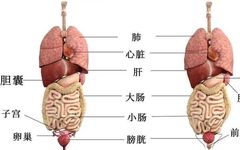Understanding the Mixed Cold-Heat Constitution in Traditional Chinese Medicine
Click on the “blue text” to follow us Medical Guidance Dr. Hu Tao, Deputy Chief Physician of the Traditional Chinese Medicine Department at Guangzhou First People’s Hospital, welcomes you to continue following us. In TCM theory, there are concepts of “heat” and “cold” that are easy to understand, such as heat in summer and cold … Read more










